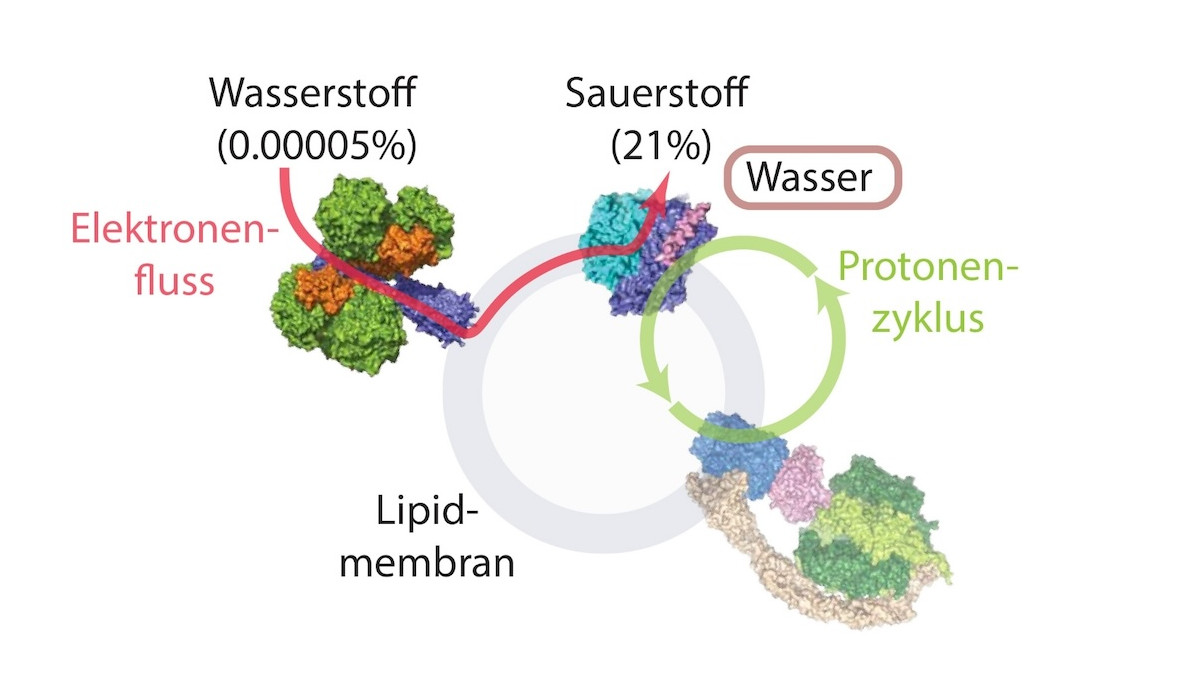The contribution of energy from air: organisms change hydrogen first appeared at the online magazine Basic Thinking. You can start the day well every morning via our newsletter update.

An international team of researchers has discovered an enzyme that can gain energy directly from air. Microorganisms take advantage of hydrogen.
Researchers at the University of Bern have a biochemical process in the laboratory together with colleagues from Australia and New Zealand reconstructedwith which microorganisms can gain energy from air. The knowledge could not only change the understanding of life under extreme conditions, but also provide the basis for new, environmentally friendly energy sources.
The idea sounds relatively simple: bacteria use hydrogen from the air to create energy. An enzyme called hydrogenase comes into play, the tiny amount of hydrogen, which is about 0.00005 percent in the air, filtered out and makes it usable. This process was only one theory for a long time, but was now being experimentally realized in the laboratory for the first time.
Energy from air: Enzymes create ATP from air components
The researchers combined three enzymes: a hydrogenase from Australia and two other components from Bern to a synthetic breathing chain, embedded in an artificial cell membrane. In the result, the enzymes generated the energy source molecule ATP of air components – and without sunlight, food or other energy sources.
What is shown in chemistry as a loud bang when mixing hydrogen and oxygen happens quietly and controlled. Instead of an explosion, the process gradually releases the energy. Similar to the mitochondria of human cells – just from air and not from food.
This even works under conditions in which oxygen is 400,000 times more often than hydrogen. For microorganisms in the Antarctic or in extremely dry soils, this could mean the difference between survival and dying.
Sustainable, clean – and expandable
The researchers see great potential in their method, because the reaction is the only “waste” pure water. It can even be accelerated: hydrogen is fed for this, for example through light -catalyzed water splitting.
This opens up new perspectives for synthetic biology, for example in drug production or energy -sufficient biosystem technology. “The idea that you can literally live from air fascinates us – and now we can show how it works,” said Christoph von Ballmoos, head of the Bern research group.
Also interesting:
- Werthms from data centers: Finland shows how energy transition works
- Lithium from Germany: white gold with dark spots?
- Google Docs: 4 Alternatives from Europe
- Use underfloor heating as air conditioning: This is how it works
The contribution of energy from air: organisms change hydrogen first appeared on basic thinking. Follow us too Google News and Flipboard Or subscribe to our update newsletter.
As a Tech Industry expert, I find the concept of organisms converting hydrogen from air into energy to be a fascinating and innovative idea. This process, known as biological hydrogen production, has the potential to revolutionize the way we generate energy and could have significant implications for sustainable energy production.
By harnessing the natural ability of certain organisms to convert hydrogen from the air into energy, we could potentially create a renewable and environmentally-friendly energy source that is both efficient and cost-effective. This technology could be particularly useful in remote or off-grid locations where traditional energy sources are limited or unavailable.
However, there are still many challenges that need to be overcome in order to fully realize the potential of biological hydrogen production. These include optimizing the efficiency of the conversion process, scaling up production to meet energy demands, and ensuring the sustainability and safety of the organisms used in the process.
Overall, I believe that the development of energy from air through the conversion of hydrogen by organisms has the potential to be a game-changer in the field of energy production and could play a key role in transitioning towards a more sustainable and renewable energy future.
Credits